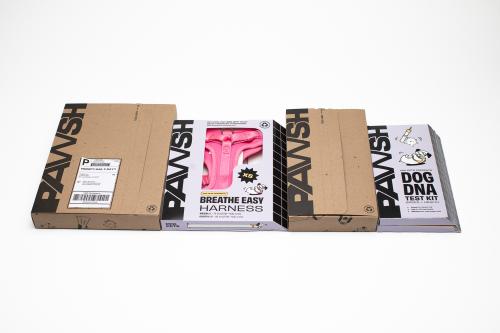CalPoly Team Shares Lessons from Pet Packaging Challenge
PAWSH Team Reflects on 2025 PPA Student Design Challenge
The Paperboard Packaging Alliance’s annual Student Design Challenge invites college students across North America to create innovative, paper-based packaging solutions.
Students in design, graphic arts, and engineering programs gain experience through creating real, recyclable packaging solutions.
In 2025, students were tasked with creating a packaging line for a pet care company, PPA Pets. They were required to include a DNA testing system or a similar lab-dependent item.
One of the finalist projects was PAWSH, entered by a team of students from California Polytechnic State University (CalPoly). We asked the students on the team about their experience.

Who you’ll hear from:
Sonia Maria Andrade — Business Administration—Consumer Packaging major
Sophia Levin — Graphic Design major
Brandon Schwartz — Art & Design major with a concentration in Graphic Design
What inspired your design concept for the challenge? Where did you go or look to seek inspiration?
“I found that existing pet DNA kits and pet care products served as a great starting point for the structural design process. They inspired me more by highlighting what could be improved rather than what could be replicated.
Once I identified major pain points, like potentially costly manufacturing choices, I was able to narrow down my design concept.” — Sonia Maria Andrade
“Our group’s initial concept developed from trying to identify what in the market has not been addressed with sustainable yet visually striking solutions.” — Brandon Schwartz
What was the most challenging aspect of designing a packaging solution that also needed to be widely accepted for recycling?
“It was challenging to strike a balance between recyclability and functionality. A biotechnological product such as a DNA testing kit has specific material requirements to ensure sterility and safe transport. I had to come up with solutions that minimized plastic waste and simplified the consumer disposal process, while still keeping the DNA sample safe.” — Sonia Maria Andrade
“This experience taught me how critical it is to minimize adhesives and eliminate mixed materials in packaging design. Even one small design choice can determine whether a package gets recycled easily or ends up in a landfill.” — Sophia Levin
What did you learn throughout this process about designing a paper-based solution?
“This process taught me the importance of creating a streamlined paper-based solution that minimizes waste, while still being intuitive for the user.” — Sophia Levin
“My main takeaway was learning how interconnected the packaging and design portions of this process were.” — Brandon Schwartz
If you could do one thing differently about your design process, what would it be?
“I would limit the amount of experimentation we did in the ideation process of the visual and packaging design. I would instead focus on quality of design drafts rather than quantity.” — Brandon Schwartz
What did you find most rewarding about participating in the PPA Student Design Challenge?
“I found it rewarding to work so closely with our team’s graphic designers. Working with such creative-minded teammates helped to balance the technical side of structural design.
I loved seeing the structural and graphic elements continuously come together throughout the project and was really proud of the final result!” — Sonia Maria Andrade
“The most rewarding aspect was collaborating with the ITP (Industrial Technology and Packaging) students. Working alongside packaging students helped me visualize 3D structures in a new way. It was refreshing to prototype and produce a final product that existed beyond my computer screen.” — Sophia Levin
“This was my first time being able to work with packaging in its developmental stages. It was very rewarding to be able to express my ideas beyond design and have a say in the structure of what I would be designing on. The most rewarding part was seeing it come to life in its final production.” — Brandon Schwartz
What advice would you give to students entering future design challenges?
“Don’t be discouraged if things don’t work out the first time. Every good design requires multiple rounds of iteration and refinement.” — Sonia Maria Andrade
“I would advise students to test their packaging design early on by printing and assembling the design on an 8.5x11 sheet of paper. Doing this helped our team catch points of frustration in the user experience. Above all, it is essential to maintain a positive attitude and play to each team member’s strengths to create a successful final design.” — Sophia Levin
“Embrace the experimentation phase and trust the process by exploring new ideas. Creativity is what fuels a successful solution to the proposed challenge, and coming up with it can take some time; patience truly is key.” — Brandon Schwartz
